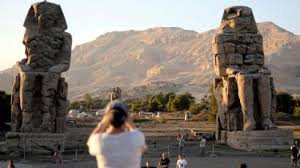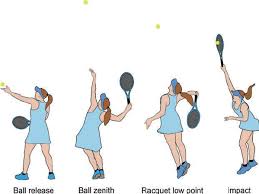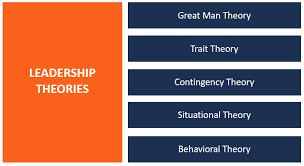
Apple International’s Distribution Strategy
Order Instructions:
submit an academic paper that covers the concept of distribution strategy. Choose Apple as the company to provide your analysis.
Your paper should discuss the overall distribution strategy of the company, clearly describe the distribution channels, and why you think the distribution strategy of your company of choice is effective and provides a competitive advantage.
You are to also provide possible alternatives to the companies distribution strategy in light of what you have learned thus far in the course. When providing alternatives, such should be well-founded, and based on appropriate research rather than simply stating an opinion without support.
SAMPLE ANSWER
Apple International’s Distribution Strategy
Introduction
Apple International provides services to a vast pool of consumers. These consumers come from sectors such as education, government, enterprises, and SMB markets. Therefore, there is reason to have a coordinated distribution strategy to ensure that products reach consumers efficiently (Mallin & Finkle, 2011). The distribution strategy used by Apple Inc. combines both concepts of marketing logistics and marketing communications. Therefore, the following discussion will indulge in discussing the distribution strategy used by the Apple Inc. in the move to make profits and achieve customer satisfaction. In addition, the discussion will give recommendations on how the company can best utilize its distribution strategy/channels.
Discussion
Apple Inc. is an American Corporation that deals with designing and marketing consumer electronics, personal computers, and computer software. It has the range of products ranging from iPad, iPhone, and iPod. Through its centrifuged marketing strategies, Apple Inc. has been able to make sure that its customers are satisfied beyond maximum efficiently (Mallin & Finkle, 2011). This correlates to the fact that the distribution medium used by the company ensures that products reach the consumer conveniently. Ina addition, the distribution strategy has enabled the company to create a unique reputation in the overall consumer electronics industry.
The distribution strategy used by the Apple Inc. is meant to counteract intense completion from such players as Google, Microsoft, and other companies (Rimac, Borst & Walid, 2008). In emphasis, the distribution strategy used by Apple Inc. is entirely a selective distribution strategy. This strategy ensures that the company gets the right medium for its distribution. It makes sure that the channel shows a complete combination of effective marketing communication and marketing logistics (Homburg, Vollmayr & Hahn, 2014). In addition, the selective distribution ensures that it exclusively limit market reach. Furthermore, the selective distribution strategy ensures that Apple Inc. control over distribution by authorizing sellers to sell on their behalf. Apple Inc. uses four distribution channels to reach its consumers. These channels range from online stores, retail store, direct sales force, and third-party wholesalers (Sahoo, 2012). The company distributes its products and resells third-party products to most major markets. This ensures that there is a direct selling of products to the consumers.
In addition, the company uses indirect distribution channels to reach its consumers. These channels comprehensively comprise retailers, value-added resellers, and wholesalers who are mainly third-party cellular network stakeholders (Sahoo, 2012). Both direct and indirect distribution strategies are characterized by pros and cons. All the distribution channels are meant to make the company continue to gain competitive advantages in the market. The company has some retail stores. The large network of stores gives the company a major advantage in the distribution (Rimac, Borst & Walid, 2008). Apple Inc. understands the preferences it customers clearly. Thus, its distribution channels are crafted to meet all brand-touch points. The company is increasingly improving its distribution capabilities by opening its retail stores in important cities around the globe (Sahoo, 2012). The retail stores have potential customers have direct experience of the company’s brands. The environment in the stores enables the customer experience a stimulating environment characterized by no-pressure setting that gives them opportunities to discover more about the Apple fraternity. The retail staff is composed of trained and helpful people whose enthusiasm lures customers to come and shop again at the stores. Homburg, Vollmayr & Hahn (2014) argue that distribution is an important ingredient of the marketing mix. It usually takes the place of ‘place’ in the mix.
Online store selling is another form of the direct distribution channel. Through online, there is no presence of intermediaries. The consumers are made to observe the product feature through the Apple Website. In addition, the customer requests and purchase the products selected through online (Sahoo, 2012). These channels are important became it is convenient and cost friendly on the part of the company. This is because it can induce the customer to engage in impulsive buying by just observing features of the products through online efficiently (Mallin & Finkle, 2011). However, this channel has been criticized by Sahoo (2012)to bring shortcomings due to a lot of unnecessary information on the websites that make the customers unable to purchase products and prefer to visit the stores themselves.
The company also uses retailers in the distribution strategy. With the use of retailers’, Apple Inc. ensures that the retailers buy smaller quantities of products from them (Sahoo, 2012). Therefore, this form of indirect distribution channels ensures that the presence of the retailers does not have many costs as compared to when both retailers and wholesalers are present. Using such retailers as Waymart And Best Buy, Apple Inc. is bale to eliminate the presence of wholesalers in the channels (Rimac, Borst & Walid, 2008). This ensures that products reach the final consumer on time, and at the same time, realizing the projected profits by the company.
To improve marketing communication, Apple Inc. uses telecom companies such as Verizon and AT& T to ensure that communication within the distribution channel is enhanced. All the four distribution channels are interconnected with various communication models efficiently (Mallin & Finkle, 2011). This ensures that an emergent information is communicated easily to the retail stores, online stores, retailer, and the wholesalers. It is observed that the telecom companies are also authorized to sell iPhone units.
The company is said to use third-party wholesalers as a part of the distribution strategy. The third-party wholesalers, used by the Apple Inc., offer products to consumers through their businesses. The company usually makes quality products. However, the third-party wholesalers sell these products independently (Samaha, Palmatier, & Dant, 2011). The Apple Inc. is responsible for manufacturing products before they are distributed to their wholesalers. The problem with this channel is that the customer cannot get experienced Apple specialists to assist them with their new products. This, therefore, forces the customers to opt to go to the direct stores where they can get the experienced specialist to advise them on how to use new products. Rimac, Borst & Walid (2008) as companies giving fulfillment services, refers the third-party wholesalers. Apple Inc. uses fulfillment services from firms such as eBay and Amazon.com for Apple Inc to sell their products. The third-party wholesalers ensure that consumers are not supplied by Apple-related products directly, as this type of distribution strategy make products be shipped at least two times (Chu, Chintagunta & Vilcassim, 2007). However, use of a third-party wholesaler is still a convenient way for Apple Inc. to reach its consumer despite the channel associated with certain drawbacks.
Lastly, Apple Inc. uses direct sales forces as one of the distribution channels. The direct sales force gives the customer an experienced technical staff. Observably, for instance, it is easier for a customer to buy two or more computers from Apple. However, it becomes difficult for a company to purchase, for instance, two hundred computers. Therefore, the direct sales force gives the buyers confidence that they are purchasing from the right distributors (Samaha, Palmatier & Dant, 2011). They deliver the purchased products to the buyer’s premises, in addition to providing consultations to the buyers on how to deal with software and hardware. Notably, the use of direct sales force is a direct form of distribution strategy.
Recommendations
Weaknesses of the selective distribution strategy used by Apple Inc are that it has a policy of exclusivity. This has been approved by the discussion above that Apple Inc. selectively authorizes sellers of its products. Yu, Cadeaux & Song (2013) warn that such an exclusive distribution strategy limits Apple Inc.’s market reach. The second and final recommendations to improve the distribution strategy of Apple Inc. are to ensure the indirect stores have specialized consultants. This move will decrease the number of people avoiding to purchase from the third-party wholesalers to go to the direct stores. Chu, Chintagunta & Vilcassim (2007) argue that congesting customers in one place do not mean improved profits when its subsidiaries have less number of customers visiting the places. Therefore, ensuring that the subsidiaries have consultants and other assisting agents, more customers will buy from the indirect stores thus improving services and services to the corporation.
Conclusion
In summary, it has been observed that Apple Inc. majors in using the selective distribution strategy. This strategy involves the company selecting its authorized retailers. This enables the corporation to leverage its functions. However, this strategy prohibits further market reach. Therefore, Apple Inc. needs to use an inclusive distribution channel to increase its market reach.
References
Chu, J., Chintagunta, P. K., & Vilcassim, N. J. (2007). Assessing the Economic Value of Distribution Channels: An Application to the Personal Computer Industry. Journal Of Marketing Research (JMR), 44(1), 29-41. doi:10.1509/jmkr.44.1.29
Homburg, C., Vollmayr, J., & Hahn, A. (2014). Firm Value Creation Through Major Channel Expansions: Evidence from an Event Study in the United States, Germany, and China. Journal Of Marketing, 78(3), 38-61. doi:10.1509/jm.12.0179
Mallin, M. L., & Finkle, T. A. (2011). APPLE INC.: PRODUCT PORTFOLIO ANALYSIS. Journal Of The International Academy For Case Studies, 17(7), 63-74.
Rimac, I., Borst, S., & Walid, A. (2008). Peer-assisted content distribution networks: performance gains and server capacity savings. Bell Labs Technical Journal (John Wiley & Sons, Inc.), 13(3), 59-69. doi:10.1002/bltj.20323
Sahoo, D. (2012). Strategic Change of Campaign at Apple Inc. Vidwat: The Indian Journal Of Management, 5(2), 38-48.
Samaha, S. A., Palmatier, R. W., & Dant, R. P. (2011). Poisoning Relationships: Perceived Unfairness in Channels of Distribution. Journal Of Marketing, 75(3), 99-117. https://www.doi:10.1509/jmkg.75.3.99
Yu, K., Cadeaux, J., & Song, H. (2013). Distribution Channel Network and Relational Performance: The Intervening Mechanism of Adaptive Distribution Flexibility. Decision Sciences, 44(5), 915-950. doi:10.1111/deci.12040
We can write this or a similar paper for you! Simply fill the order form!












